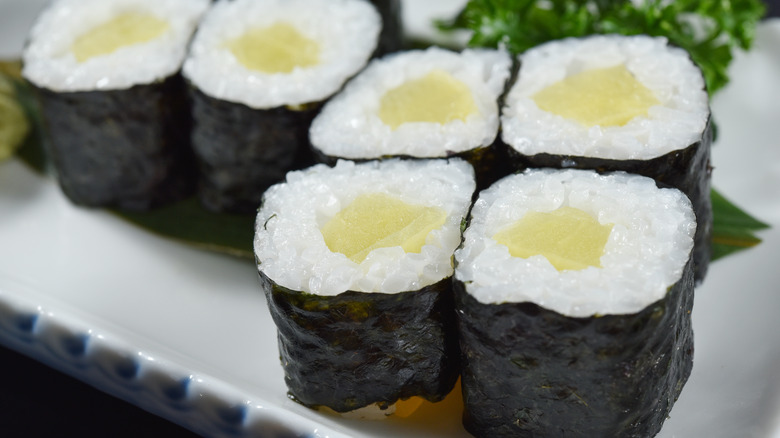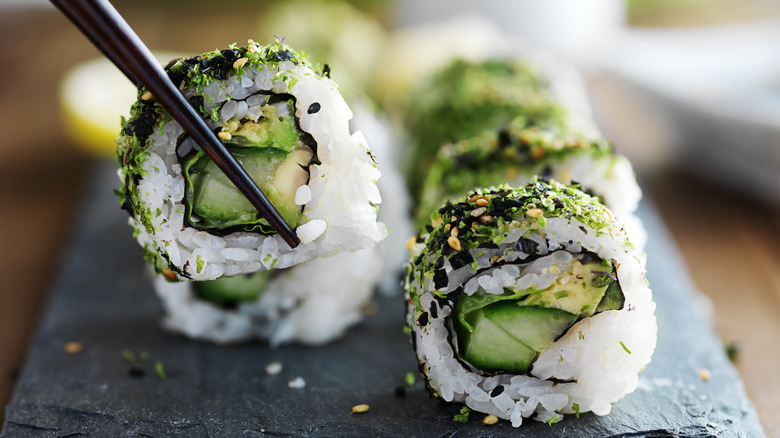Oshinko Is The Pickled Veggie You Should Roll Into Vegetarian Sushi
Western sushi fans have probably come across oshinko rolls at least once in their dining careers, but probably wouldn't be able to describe them based solely on the name. Simple, single-ingredient sushi rolls are not usually people's first choice when scouring sushi menus, especially when that single ingredient is a vegetable, and when there are so many kinds of fish and eye-catchingly made rolls to be tried. But for home cooks who would like to dabble in sushi making — or those who don't like raw fish – it's good to have some simple go-to's to rely on to deliver a great rolled sushi experience. For that, there are few rolls better than oshinko.
Broadly speaking, oshinko is a term in Japan used to classify quick pickles which haven't undergone fermentation and are meant to have a refreshing flavor. These pickles can vary from napa cabbage, to carrots, to cucumbers when eaten on their own; but as it relates to sushi, the oshinko roll always uses the yellow-colored pickled daikon radish. Aside from providing a striking color that pops from the rice and seaweed, the pickled radish has a great crunch and has its own sweetness and light acidity amplified by the sugar and vinegar present in sushi rice. When also dipped in soy sauce and smeared with a hint of wasabi, it's a surprisingly complete bite of food, perfect for vegetarians and vegans (depending on the soy sauce).
Other vegetables to try in vegetarian sushi
Pickled daikon that comprises oshinko rolls has a mild flavor compared to other radishes, but it still might not be everybody's cup of tea. Another popular Japanese pickle that can be found in simple sushi rolls is Japanese pickled plum, or umeboshi, which is flavored with shiso leaves. Umeboshi compared to the pickled daikon in oshinko rolls has its sour flavor turned up to 11, so if you like the sound of a strong, herbaceous pickle, this one's for you. To make it into a sushi roll, take a couple of pickled plums, remove the pits, and finely chop the fruit into small bits that can be evenly rolled up into the rice. This can make a great mid-meal palette cleanser.
For those who might not want pickles inside their vegetarian sushi or who want to present a variety of options on the plate, plain Japanese cucumbers are another excellent candidate. Japanese cucumbers might not be accessible for all, so a good substitute that is easier to find is Persian cucumbers, which have a similarly subdued vegetal taste. Like pickled daikon, they provide an excellent crunch, and they are highly presentable thanks to their bright green color. Home cooks have the option to roll them into the center of the rice as large chunks or sliced more finely into thin strips. Either way, cucumber rolls have a clean, fresh flavor that takes on soy sauce extremely well. It's no wonder it's such a common ingredient across the spectrum of sushi rolls.

